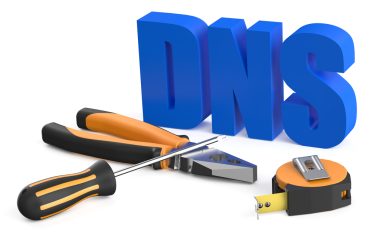
While data lakes and warehouse store the data itself, they don’t give you the picture of your data in motion as data fabrics do.
Your data is wasted at rest, so you’ve built a complex set of systems to provide continuous insights and to ensure that you can keep mining that data. The more solutions you’ve implemented, the harder it is to keep up with what’s going on.
Not only are you losing track of your data, but you’re more inclined to experience things like Shadow IT as your employees grow frustrated with the IT department being overwhelmed and take matters into their own hands.
It may not be realistic to “simplify,” considering how complex data is in our modern world. If you can’t migrate over to one simple platform — and with the wealth of solutions at your disposal, you may not even want to — creating your data picture is necessary. And how do you do that? Introducing the Data Fabric.
See also: Are Data Lakes Hindering Digital Business Transformation?
What Is Data Fabric?
You may not sew, but you’ve probably seen all the scraps that go into making a quilt. When everything is scattered across the floor, it isn’t easy to see the pattern. You KNOW it’s a quilt, but you can’t see it just yet.
However, sew the pieces together, and a pattern emerges — a cohesive picture emerges. Add the quilting patterns, and you have a comprehensive and layered whole, not just scattered pieces.
You could also think of data fabric like a map. Standing in your front yard makes it difficult to comprehend how vast your city is. Boil it down to a map (even a complex one), and the range and scale emerge.
Data fabric is the same in concept, but the landscape or pattern you’re creating is your data itself. It creates two layers. One layer is like the quilt, giving you the big picture of your data and helping put things in context. The second is like the map, telling you where data is and how it travels.
Data Warehouses, Data Lakes, and Data Fabric
You have a data warehouse already. Maybe your data science team is maintaining a data lake. Do you still need data fabric?
Absolutely. Talking with your data engineer, you’ll likely discover that while data lakes and warehouse store the data itself, they don’t give you the picture of your data in motion. Data fabric enlightens your team and your decision-makers to your entire data operation.
Gartner identifies data fabrics as a means to frictionless access across a distributed network. Traditional data management options have gone obsolete as data itself changes, and our ability to process that data changes.
Even with programs like Hadoop, which can colocate disparate data, organizations are still risking losing data, and with it, value. Plus, achieving governance is a nightmare if you don’t have the full picture at your disposal.
Instead of relying on inflexible data warehouses to swing up, implementing data fabric gives you a cohesive, yet flexible way to manage and follow up. Your organization may stay distributed, but your governance and insights can come together.
Implementing Data Fabric
Whether you go with one of the handful of Data Fabrics as a Service (DFaaS) or orchestrate your own, there are a few essential characteristics.
Data fabrics must:
- Manage data across all environments.
- Provide API development lifecycle support
- Support all data use cases
- Ensure governance and quality
- Embrace machine learning or have that capability
- Enable data integration
- A single representation of data from all sources
As companies struggle to balance democratizing data and protecting it to ensure compliance, a comprehensive view of that data is necessary. Data doesn’t exist behind firewalls anymore or with on-premise locations.
Instead, the dynamic nature of data practically ensures companies are spending all their time trying to figure out what they have and where it is. Just that task alone makes pivot and reaction times slow. In terms of digital transformation, it’s hopeless.
A DFaaS provides a comprehensive structure for your data, its location, and its movement. Organizations get faster migration and reduced reliance on those legacy structures. Best of all, it balances the need for governance with the availability of data.
Why Use a Data Fabric?
The purpose of data is continuous insight, so you must be able to explore data freely. A Data Fabric can facilitate that exploration. It builds cohesion and helps bridge gaps where data engineering resources may be scarce.
It’s not possible to manage your infrastructure purely with human labor. There are too many layers and too much complexity. Instead, a data fabric augments your human teams, eliminating a lot of manual processes.
It also minimizes disruption by facilitating data management. It automatically adjusts to changing technology and prioritizes bringing the program to the data rather than the other way around. This principle creates a faster data analysis and ensures that data remains platform agnostic, to some extent.
Machine learning drives these processes, automating much of your data management strategy. And the flexibility is key, here, to extracting insights again and again from an incomprehensibly large data landscape.
The Data Fabric Promise
Companies are looking to future-proof their technology now that transformation happens in seconds instead of years. Data fabric makes those transitions easier because there’s a clear picture of your organization’s data as a whole.
Companies must come to grips with the reality of data as it is, distributed, and decentralized. There’s no making use of data without this unified strategy, and companies could waste so much of its value through a simple lack of vision.
Data fabric solutions are also the most financially feasible choices. Connection to any data source through pre-packaged connectors eliminates the need for code, reducing a company’s reliance on developer teams to build in-house solutions.
As part of your digital transformation, it’s vital to understand how these comprehensive structures, this data fabric, ensures your company can manage data and systems with increasing complexity without burdening your human teams and remaining Agile. It’s time to look at your quilt and your map.




























